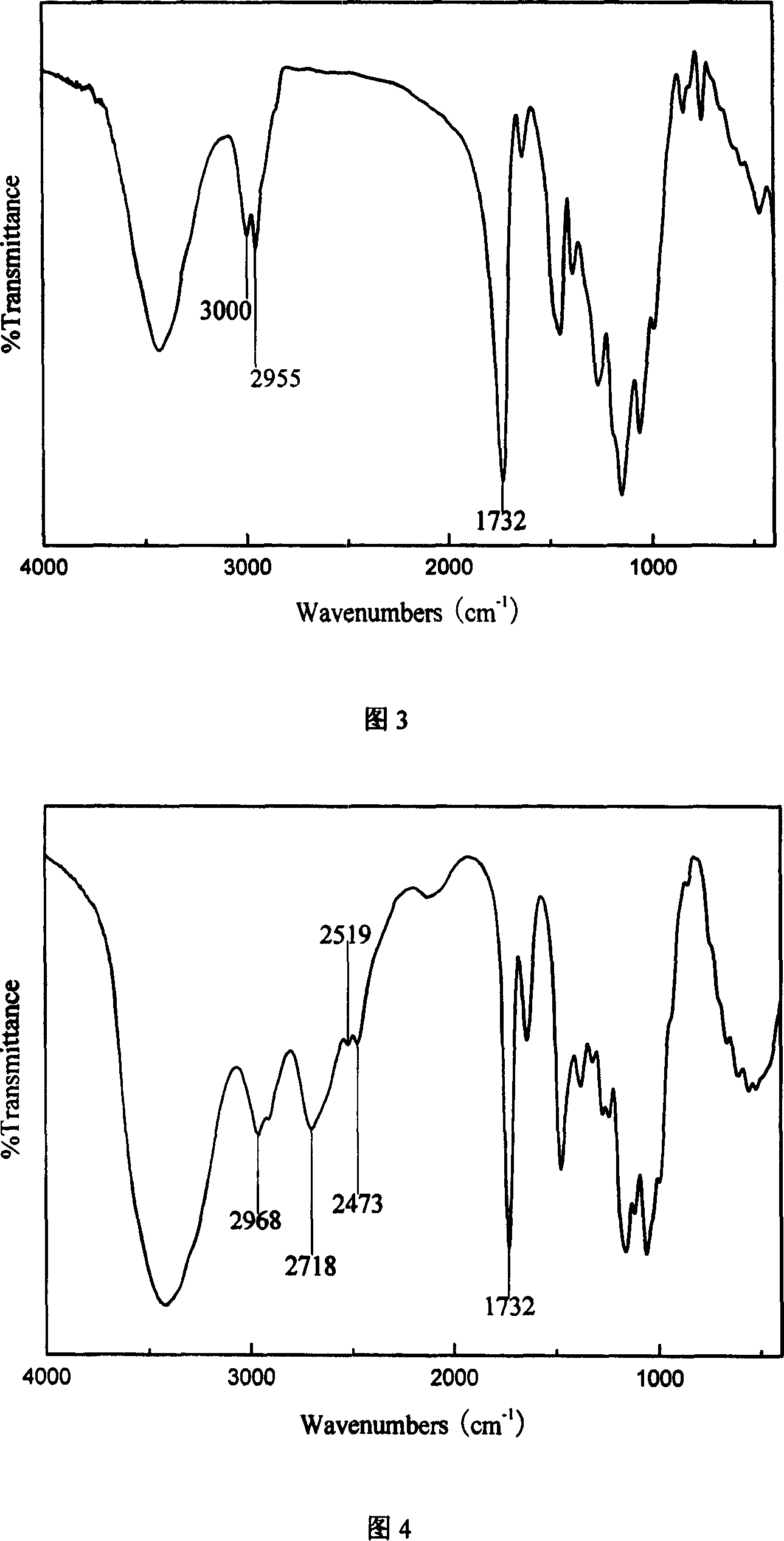Method for preparing hydrophilic or hydrophobic fiber
A hydrophobic fiber, hydrophilic technology, used in fiber processing, textiles and papermaking, etc., can solve the problem of low monomer utilization rate
- Summary
- Abstract
- Description
- Claims
- Application Information
AI Technical Summary
Problems solved by technology
Method used
Image
Examples
Embodiment 1
[0010] Put the ramie fiber into the mixed solution of N-methylpyrrolidone and 2-bromoisobutyryl bromide, add 4-dimethylaminopyridine, react at 20°C for 6 hours, take out the ramie fiber and wash it with absolute ethanol and distilled water times, then dry. Put the dried ramie fiber into the acetone solution of methyl methacrylate, add pentamethyldiethylenetriamine and cuprous bromide, react at 30°C for 24 hours, take out the fiber and wash it with acetone and distilled water several times, The hydrophobic fiber is obtained by drying.
Embodiment 2
[0012] Put the ramie fiber into the mixed solution of N-methylpyrrolidone and 2-bromoisobutyryl bromide, add 4-dimethylaminopyridine, react at 40°C for 6 hours, take out the ramie fiber and wash it with absolute ethanol and distilled water times, then dry. Put the dried ramie fiber into the acetone solution of styrene, add 1,10-phenanthroline and cuprous bromide, react at 40°C for 24 hours, take out the fiber and wash it with acetone and distilled water several times, and dry it. to obtain hydrophobic fibers.
Embodiment 3
[0014] Put the ramie fibers into the mixed solution of N-methylpyrrolidone and 2-bromoisobutyryl bromide, add 4-dimethylaminopyridine, react at 60°C for 24 hours, take out the ramie fibers and wash them with absolute ethanol and distilled water times, then dry. Put the dried ramie fiber into the acetone solution of dimethylaminoethyl methacrylate, add bipyridine and cuprous bromide, react at 50°C for 6 hours, take out the fiber, wash it with acetone and distilled water for several times, and dry it That is, hydrophilic fibers are obtained.
PUM
 Login to View More
Login to View More Abstract
Description
Claims
Application Information
 Login to View More
Login to View More - R&D
- Intellectual Property
- Life Sciences
- Materials
- Tech Scout
- Unparalleled Data Quality
- Higher Quality Content
- 60% Fewer Hallucinations
Browse by: Latest US Patents, China's latest patents, Technical Efficacy Thesaurus, Application Domain, Technology Topic, Popular Technical Reports.
© 2025 PatSnap. All rights reserved.Legal|Privacy policy|Modern Slavery Act Transparency Statement|Sitemap|About US| Contact US: help@patsnap.com


